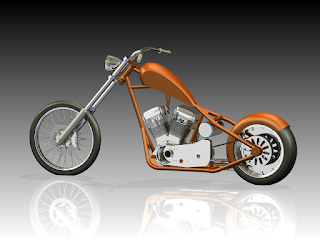My good friend managed to print the fuel tank for the chopper bike project and it turned out pretty good. He has a home built version of Prusa printer and he's using my project to calibrate the fine tune the printer.
The CAD part was split in half to assist the printing process. There is still some finishing to do on the parts, using filler putty and sanding all the printing lines.
For those who don't remember what is the part for, here is a reminder of the project.
And the printed parts as received from the 3D printer.
The CAD part was split in half to assist the printing process. There is still some finishing to do on the parts, using filler putty and sanding all the printing lines.
For those who don't remember what is the part for, here is a reminder of the project.
And the printed parts as received from the 3D printer.






























